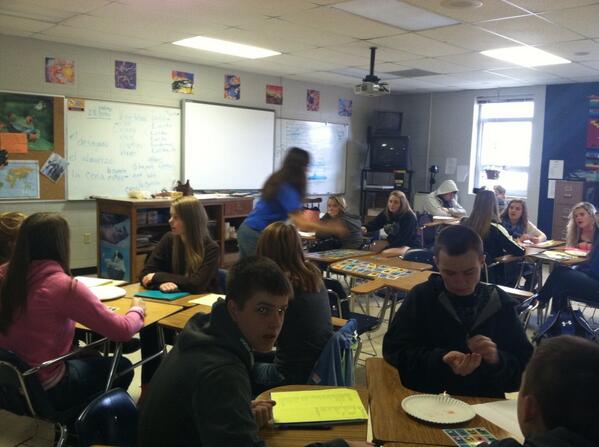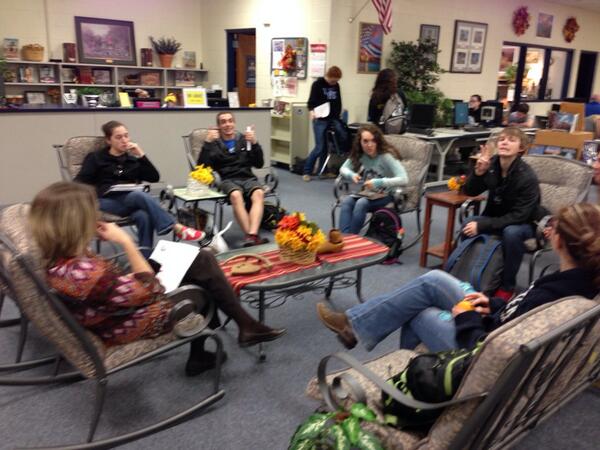Years ago when I was learning about backwards design from the work of Grant Wiggins and Jay McTighe, I was teaching high school English and began to apply the concept of big ideas and essential questions to my lessons and unit designs. Like most teachers, it was not uncommon for my students to struggle to connect to some aspects of the course content. So I was searching for ways to help students make connections and find relevance. Most importantly, I wanted better answers to the ever present question, though not always outwardly spoken, "Why are we learning this? Why is this important?" I wanted to answer that question in a meaningful way that did not include the typical reasons: "You'll need this for the next course" or "You'll need this for college."
So that's where big ideas and
essential questions help address reasons for learning that get at meaningful
experiences beyond making a living or getting into college. Essential questions
help students make connections to enduring concerns that are universal to all
persons. This type of learning appeals to the natural curiosity of every
learner and invites exploration rather than check-box learning. McTighe and
Wiggins (1999) explain, "At the heart of uncoverage, then, is the
deliberate interrogation of the content to be learned, as opposed to just the
teaching and learning of material."
So while the value of essential questions has been well established in the classroom, an idea-generating article in Principal Leadership describes the use of essential questions that extend beyond a specific course and are schoolwide essential questions. Each year the school develops possible questions and asks students to vote on them. After the questions are selected, it's determined what sequence the questions will be used--one question each quarter.
I love the idea of schoolwide essential questions to encourage deeper thinking and interdisciplinary connections. I also think Twitter could play a useful role in continuing these discussions in a way that invites all students and teachers to converse in back-channel chats that allow students who may not even be in the same classes to share ideas across all grade levels and courses. I think the potential for intellectual dialogue is fantastic!
So while the value of essential questions has been well established in the classroom, an idea-generating article in Principal Leadership describes the use of essential questions that extend beyond a specific course and are schoolwide essential questions. Each year the school develops possible questions and asks students to vote on them. After the questions are selected, it's determined what sequence the questions will be used--one question each quarter.
I love the idea of schoolwide essential questions to encourage deeper thinking and interdisciplinary connections. I also think Twitter could play a useful role in continuing these discussions in a way that invites all students and teachers to converse in back-channel chats that allow students who may not even be in the same classes to share ideas across all grade levels and courses. I think the potential for intellectual dialogue is fantastic!
· Essential questions are worthy of
inquiry, calling for higher-order thinking – analysis, inference, evaluation,
and prediction.
·
They are thought-provoking and
intellectually engaging, sparking discussion and debate, giving students the
tools and a forum to wrestle with important ideas.
·
They are open-ended – that is, there
isn’t a single, final, correct answer.
·
They require support and
justification, not just the answer.
·
They produce a humbling acceptance
that some matters are never truly settled, but at the same time a desire to
think about such questions.
·
They point toward important,
transferable ideas within and across disciplines.
·
They raise additional questions,
spark further inquiry, and need to be revisited over time.
Our
school is considering schoolwide essential questions for next year. We believe
the questions will connect ideas across all content areas and
provide opportunities for literacy development and critical thinking. I like
Mortimer J Adler's Six Great Ideas as another starting point for writing good questions. Essential questions will flow from the really big ideas, and these are the biggies. Three ideas we judge by--equality, justice, and liberty; and three ideas we live by--truth, goodness, and beauty. The best essential
questions will relate to these six great ideas. The following are some possible essential questions.
·
What sustains us?
·
If we can, should we?
·
Does age matter?
·
How do people approach their health?
·
What is race, and does it matter?
·
Can you buy your way to happiness?
·
Who am I? Why do I matter?
·
What is beauty and/or what is
beautiful?
·
Does gender matter?
·
Who are your heroes and role models?
·
What’s worth fighting or even dying
for?
·
What will you, or won’t you, do for
love?
·
What is normal, anyway?
·
How does your world influence you?
·
Is there a limit to tolerance?
·
What makes you “you”?
·
Which is worse, failing or never
trying?
·
You exist, but do you live?
·
If you could have a superpower, what
would it be and why?
·
Are humans naturally good or evil?
·
Is freedom ever free?
·
Do looks matter?
By connecting what students learn to
bold and grand ideas such as these, we encourage deeper meaning and connect
learning to the most important questions in the universe.
“Using Schoolwide Essential
Questions to Drive Learning” by Nancy Frey, Douglas Fisher, and Heather
Anderson in Principal Leadership, February 2014 (Vol. 14, #6, p.
52-55), www.nassp.org;
.JPG)



